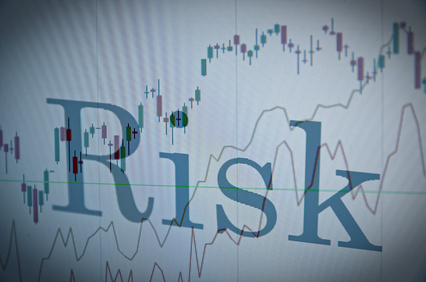For years, I have been searching for the “Holy Grail” of trading and investing. Like all traders, I want to achieve high returns with as little risk as possible.
Obviously, it is impossible to entirely eliminate risk, even if all positions are fully hedged. An example of this is the case of Long Term Capital Management (LTCM) in the late 1990s. This company believed that because they had the brain power of Nobel Loreates behind them, they would have the ability to find the trading “Holy Grail” through diversification and leveraging of their accounts several hundred times in order to obtain incredible returns, which they did gain for several years before everything spectacularly imploded.
A lesson that LTCM teaches us is that when you have lost all of your chips, you no longer have the ability to play. This is the first rule to remember. Regardless of your confidence or how attractive you find theoretical expected returns to be, never blow up your account.
The outcome all truly successful traders seek are high returns involving minimal risk, rather than no risk. They are perpetually prepared for a “Black Swan” event, which is an event that comes as a complete surprise, or “out of left field”, so to speak. Nassim Nicholas Taleb coined this term. It is regrettable that LTCM hadn’t somehow learned about Nassim Taleb in its greatest days.
You might remember my earlier post exploring the effect of personality on one’s trading success. This phenomenon also relates to risk management. While the level of risk management is subjective, there are in fact parameters that indicate a maximum beyond which you shouldn’t go. It’s important to remember that one size doesn’t fit all, and everyone is unique. Some people are willing to take huge risks in order to have a theoretical chance of gaining a vast fortune.
I feel that the majority of people, including myself, are absolutely not willing to risk everything on the basis of a single gamble. While I am able to understand risk, I hate it and am always eager to minimize it as much as I possibly can.
During my first ever “guru” weekend trading seminar I attended, we were instructed to split our account into 5 equal lots of 20% for every option trade. If several of them go wrong in a row, which is very much a possibility, your hard earned account in its entirety will be decimated! Even as a beginner, I realized that this advice was ridiculous and dangerous, and I decided to change the rule to creating 10% or ten equal lots. When I think about it now, even my modification was too risky. As you probably guessed, the “guru” who ran this weekend is no longer around.
As I ended up blowing several accounts along the way, and some of my accounts descended almost to zero before I topped them back up just to reassure myself psychologically. This was certainly a case of self-delusion.
After a while, I asked myself: How did the world’s best do it? Titans in hedge funds, like David Einhorn, Carl Icahn, David Tepper, and Jim Simmons hate risk and avoid it, and yet they have achieved outstanding yearly returns over long periods of time. They have a solid understanding of risk versus reward, and are highly skilled in striking a balance in order to achieve their desired return outcome.
There are books out there who instruct traders to take 2% risk on every trade. Although better, this risk may still be too much for the majority of traders. I feel that 2% risk is still too high a risk level. But you may ask, isn’t this dependent on your account’s size as 2% of $10,000 ($200) differs from 2% of a $100,000? The answer to this question is psychologically yes, as $200 does not buy as much as $2,000.
However, in reality this is not at all the case. This is because we should never focus on the dollar loss amount but rather the percentage loss amount. If you risk too great a percentage in a small account, and the trade goes badly for you, eventually it will be very difficult for you to gain back psychologically and practically after a group of large losses. Remember that it requires a 100% gain to offset a 50% loss. Therefore, if you achieve 15%-30% a year on average, why should we feel that we can easily gain back 100% to make up for our losses quickly if we have lost half our account? I am certain that I cannot, and so you should avoid being faced with this dilemma in the first place by putting less risk in each trade.
Today, I make sure my risk does not exceed 0.5% per trade. Which number chosen depends on the trading system in addition to the conditions of the current market. However, I can still quite easily achieve large yearly market beating returns. Occasionally I may have an underperforming annual return, but other years I am able to make up for this and move quickly ahead, enduring little risk and having the knowledge that my accounts in addition to my investor funds never have the risk of being burdened with a “Black Swan”.
Just remember: you are not required to endure huge risk to achieve excellent returns. The slow and steady tortoise wins this race. Let the magic of compounding work for you!
To see how you can double your returns ‘safely’ in 10 simple steps, click here.




